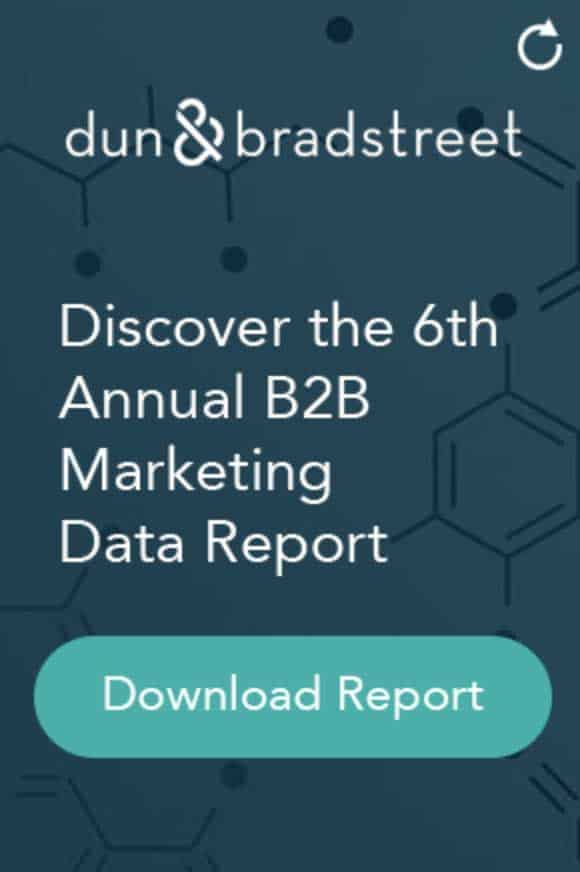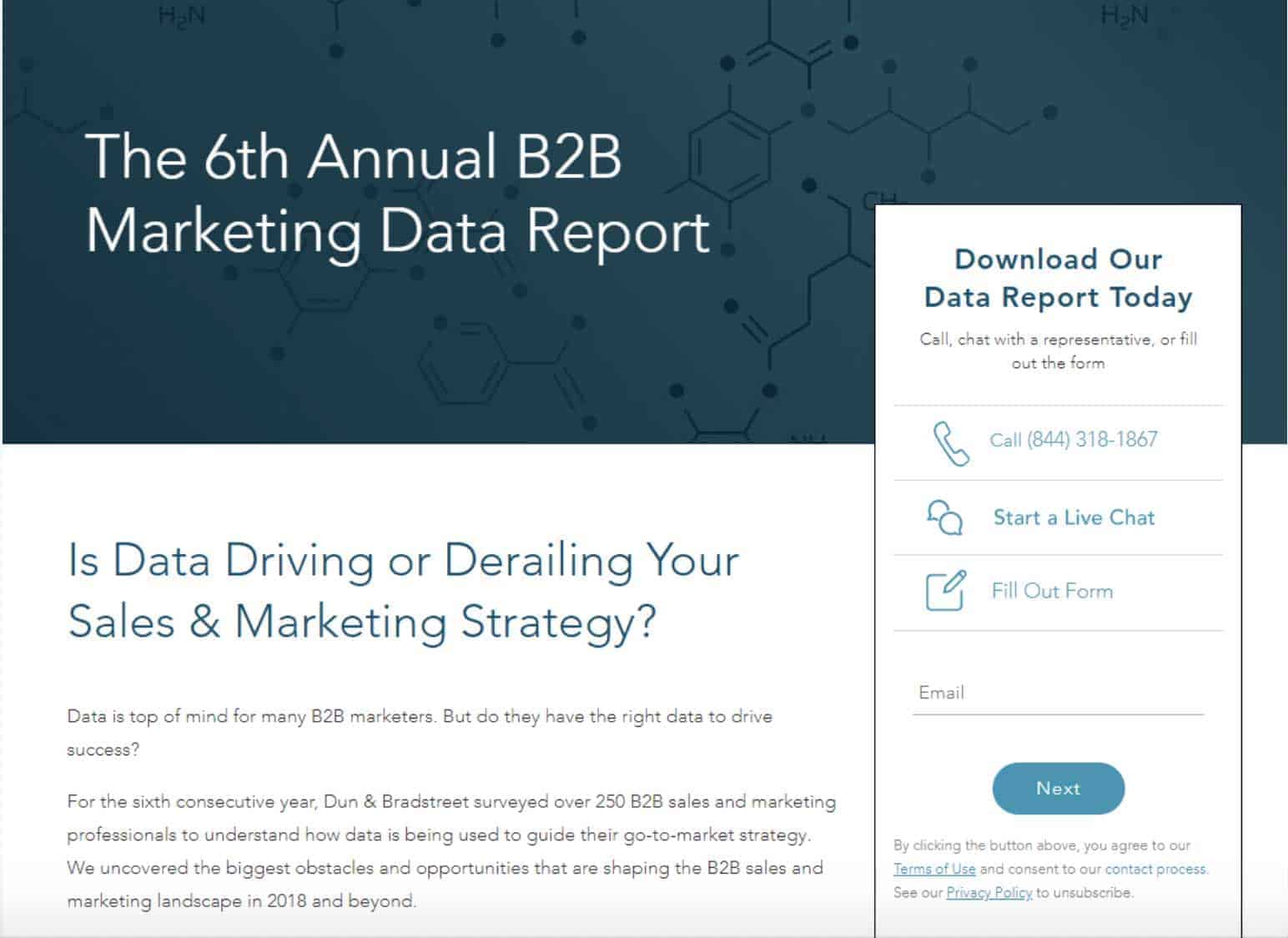Without accurate, up-to-the-minute personalization, B2B businesses don’t stand a chance.
Connected consumers today expect the companies they interact with to know who they are and what they’re interested in, regardless of whether the brand is B2C or B2B. Consumers have no time for irrelevant or ill-timed sales pitches—in fact, that’s one of the quickest ways to lose them.
But how do B2B brands achieve this personalization at scale? It’s one thing to have data on your customers—it’s quite another to be able to implement it in a way that actually moves the needle (not to mention, that doesn’t cross the line into creepy).
Here are just a few places to start.
Create personalized landing pages mapped to your digital ads
Digital advertising has evolved to allow an unprecedented level of targeting and personalization.
Just a few years ago, ads could only be targeted based on broad parameters, meaning that that they had to appeal to a wide audience.
Brands that wanted to appeal to more than a couple of groups could either create several different ads and hope the right people would see them, or create a single, generic ad to be served to everyone.
Today, microtargeting abilities via Google’s Ad Services, Facebook, Instagram, and other social sites means that it’s easy to create ads designed for highly specific groups: women between the ages of 28 and 35 with an interest in marketing and who’ve had a job title that includes “marketing,” for example
(Whether or not it’s wise to target your ads that closely is another discussion—in short, it depends on the situation).
Most B2B brands have figured this out and are targeting their ads appropriately, but there’s one element of this equation that often goes unaddressed.
The landing page.
Where are your customers landing after they click on one of your ads? Do all those meticulously personalized ads take all your customer groups to the same landing page? To your website?
If that’s the case, your brand is missing out on an important opportunity to give customers more of the personalization they demand.
By creating targeted landing pages mapped to specific digital ads, you’ll greatly increase the likelihood that a customer will convert. Take this example from Dun & Bradstreet, which is targeted to a specific persona and a specific purpose: getting downloads of their latest marketing report.

When customers click on the ad, they’re taken to this landing page, which matches the ad in everything from color scheme, font, and design, to the action the brand wants customers to take.

By delivering customers precisely the experience they expect once they click on your ad, you’ll not only increase your conversions, but you’ll effectively move customers further down your sales funnel—and ultimately, closer to a purchase.
Map your content to specific buyer experiences, touchpoints, and customer questions
As connected consumers distrust traditional paid endorsements more and more, content marketing is becoming ever-more important.
In fact, according to the CMO Council, 9 out of 10 B2B buyers say that content has a moderate to major influence on purchasing decisions.
Add in the fact that a B2B buyer is already 80 percent of the way to their final purchase decision by the time they engage with sales, and it’s clear that your content has a serious job to do: it has to propel your customers 80 percent of the way.
To accomplish this, the best place to start is a content audit. What content do you already have that could be tweaked, refreshed, or repurposed for specific personas and specific touchpoints in the purchase journey?
A case study on a client that used your service could be served to customers who’ve expressed interest in your brand through clicking through one of your emails, but who haven’t reached out to sales yet.
Targeted ads for a webinar or whitepaper could be served to customers who fit specific demographic criteria at the very beginning of the purchase journey.
Adding a robust FAQ section on your site, which covers questions that range from the most basic to advanced, can help customers at multiple stages of the purchasing journey. This kind of multipurpose content can be especially valuable because it can serve several personas at once, moving each of them to the next step of the purchase journey—whatever that step may be.
Embrace social selling across the organization
Social selling is no longer something B2B brands should consider. It’s simply a foregone conclusion for building B2B brands.
At its essence, social selling is simply interacting with prospects through social media on platforms like Facebook and LinkedIn.
The reason it’s so effective is that today’s buyers trust recommendations from peers far more than they trust a brand or a paid endorsement. So if, for example, one of your sales reps is reaching out to a prospect through a mutual connection on LinkedIn, you’re already a step ahead.
Social selling also allows sales reps to stay in greater contact with buyers throughout the entire purchase journey—without being overbearing. According to the Harvard Business Review, “twenty-three percent of deals go dark because reps fail to engage buyers through the entirety of the sales process.”
By offering interested leads relevant content throughout the purchase journey, whether through targeted emails or through direct contact via social, sales can establish an ongoing rapport that more effectively moves customers down the funnel.
Gain executive buy-in
It’s important to note that, while embracing these practices on a departmental level can be effective, the most significant changes will come from gaining executive buy-in and initiating organization-wide change.
As that same HBR article finds, “A global survey of sales professionals conducted by LinkedIn (where I work) last year found that 83% of top social sellers work at companies with focused social selling programs. When social selling is deployed, win rates increase by 1.2x, and deal sizes increase by 1.3x.”
Making the case for adopting a dedicated social selling program can be challenging, but the statistics support the importance of adopting the practice.
If you have sales reps who are already experiencing success through this method, be sure to bring them into the conversation. If you can show your execs that the approach is already bringing them results—even if they weren’t aware of it—you’ll stand a much greater chance of winning their approval for a full, organization-wide social selling program.
Delivering personalization at scale may seem like a tall order, but it’s not as challenging as it may seem—especially if you break it down into specific, measurable steps. For more on creating B2B success in the digital age, read our post “How B2B Companies Can Exceed Digital Expectations.”







